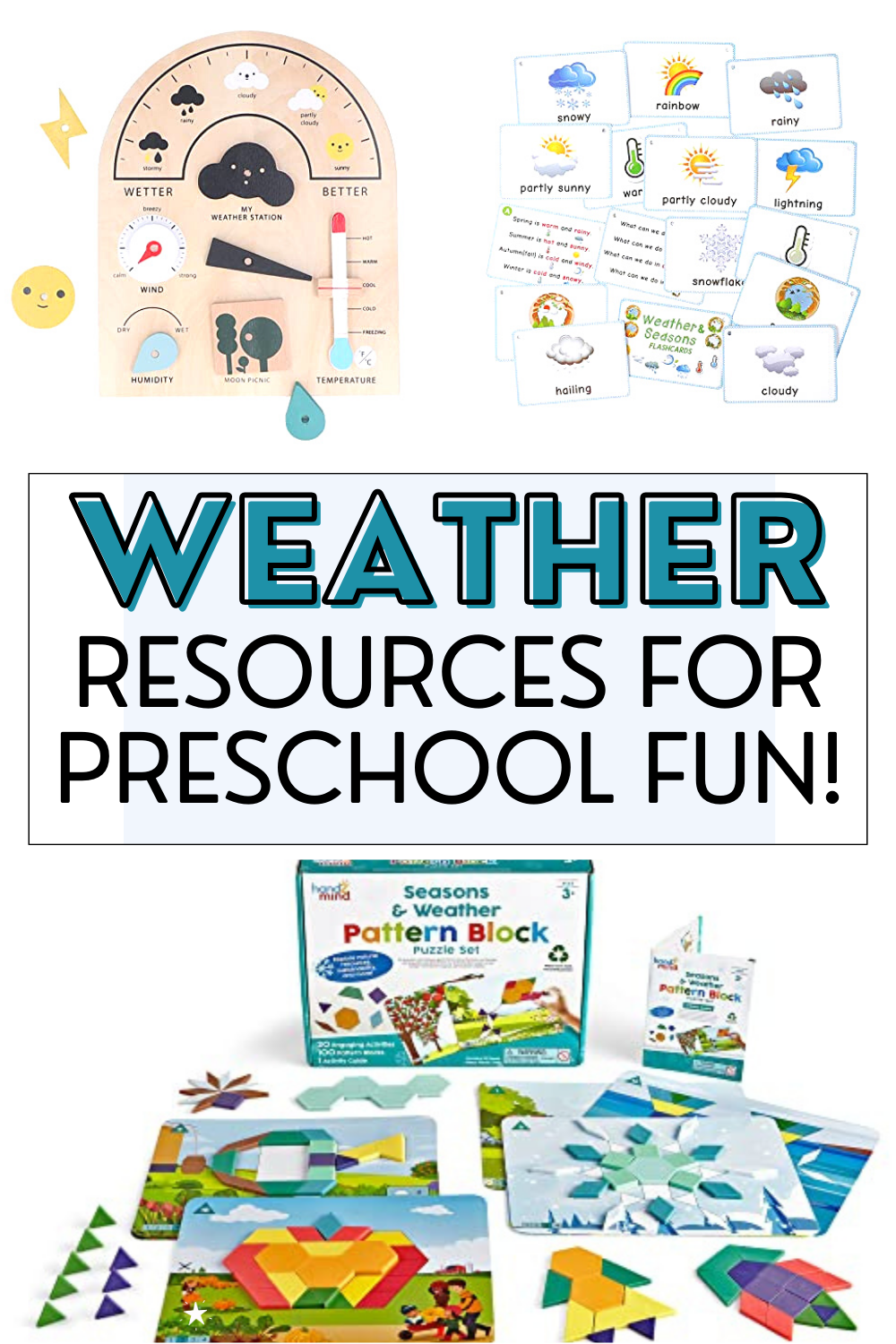Weather Teaching Resources
Are you ready to explore weather teaching resources designed to make your next lesson plan more comprehensive and engaging? If so, then you’re in luck!
Enriching your curriculum with our selection of preschool weather activities can stimulate children’s curiosity and foster their understanding of the world around them.
Imagine the thrill students will experience as they witness the science behind the weather they experience daily, engaging with concepts like precipitation, temperature, and wind in a hands-on, interactive manner.
Let’s dive in and explore these fantastic resources that will help you bring the magic of meteorology into your classroom in a fun, educational, and memorable way.
Prepare to inspire your students to learn more about the natural world, one weather phenomenon at a time!

How to Teach Weather to Preschoolers
Teaching weather to preschoolers can be an exciting adventure of discovery. As educators, we have the unique opportunity to spark the natural curiosity of children by introducing them to the fascinating world of meteorology.
With the right resources and activities, we can make each lesson an enjoyable journey of learning, helping children understand the basic concepts of weather: sun, rain, snow, wind, and clouds.
Incorporating practical activities is key in making these lessons engaging. For instance, creating simple weather charts where children can track daily weather conditions encourages observational skills and helps them identify patterns.
Using visual aids, like colorful weather-themed flashcards, can be useful for teaching new vocabulary. Remember, the goal is to make learning about weather as immersive and interactive as possible, to foster a lasting love for science in these young learners.
Weather Teaching Resources
In this section, you’ll find a carefully curated selection of teaching resources designed to augment your weather lessons.
These resources, ranging from interactive games to hands-on experiments, have been chosen for their educational value, creativity, and ability to engage young learners.
They are tools to help bring the complex concepts of weather down to a level that preschoolers can easily understand and enjoy.
Let’s dive in and discover how these resources can transform your weather lessons into a captivating exploration of meteorology for your students.
You will get 103 pieces of classroom dress weather chart cutout set. Each set comes with 200 pieces of glue point dots and some stickers. With season theme elements, a cute and colorful bulletin board set helps teach about the varying weather; Ideal for any homeschool or classroom learning environment!
A cute and colorful bulletin board set helps teach about the varying weather. Perfect for any homeschool or classroom learning environment.
Wooden weather station toy will help kids leaning weather knowledges, and allow them to play for hours bringing endless fun.
The weather season flannel felt board story is useful and unique toy for preschool to early learning about weather season; Feel the changes of weather in four seasons! Through play felt pieces, children investigate how objects change in color; And explore different types of weather and how different types of weather affect people and our environment. Delight children with its interactive figures and captivating story.
You can get a set contains four themes: Spring, Autumn, Winter, Valentine's Day, meets your decoration needs throughout the year.
Teacher-developed Activity Guide introduces children to the seasons and weather events shown on the Puzzle Cards.
Invite students to observe daily weather patterns with this interactive Weather Wheel Chart. It features kid-friendly illustrations to reinforce various types of weather.
This set of flash card uses words and light pictures to help children build understanding and memory skills, also offer children a fun and easy way to practice their cognitive skill. Students will delight in mastering new skills.
Season Wise is great for preschoolers to play at home or in a classroom. An ideal resource for kindergarten learning activities. Review each picture card, have discussions, and guide kids to sort cards across categories.
Magnetic Die-Cut Cute Weather Set is perfect for reusable learning in the classroom or home
Let’s chart the weather! Take a peek outside your window - What do you see? Rain? Sun? Snow? The weatherman says it’s going to be 94 degrees today - What does that mean? Should I put on my coat!? Help your kiddos explore & chart the changing weather!
The fun art style of this set will engage students as they spin the water cycle wheel as a manipulative learning tool and use the student-friendly water cycle vocabulary definitions as a reference tool.
This poster shows the different types of clouds. Many only form at certain altitudes, so this poster presents them as high-level, mid-level, and low-level. The bottom row is devoted to clouds that may be on multiple levels. Cloud identification is one way in which weather can be predicted.
Flagship's Weather Today rug will give each child the opportunity to see snow, rain, and sunshine no matter what's going on outside the classroom.
These educational preschool posters are designed with beautiful engaging colors and graphic illustration, grip children's attention and the vivid pictures will arouse their curiosity.
How can I ensure that weather teaching resources are age-appropriate and engaging for preschool-aged children?
When planning weather teaching resources for preschool-aged children, it’s important to ensure that the materials are age-appropriate and engaging. One approach is to use hands-on, experiential learning activities that allow children to explore and observe different weather phenomena in a fun and interactive way. Weather-related crafts and art projects can also be a great way to get children excited about learning and help them to internalize key concepts.
In addition to these types of activities, incorporating music, dance, and movement into weather-related lessons can help to keep children engaged and motivated. When selecting weather teaching resources, it’s also important to consider the developmental needs and abilities of preschool-aged children. Simple, straightforward language and visuals can be more effective than complex or abstract concepts, and it’s important to avoid overwhelming children with too much information or detail.
Finally, incorporating opportunities for free play and exploration can allow children to take ownership of their own learning and engage with weather concepts in a way that is meaningful and memorable for them.

Teaching weather to preschoolers is not just about imparting knowledge but also about sparking a lifelong interest in science and the natural world.
With the resources and strategies we’ve explored today, you’re well equipped to turn your weather lessons into an exciting journey of discovery for your students.
Remember, the goal isn’t to master complex meteorological concepts, but to instill a sense of curiosity that fuels continuous learning.















